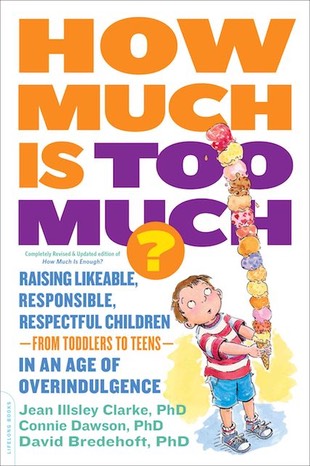KEY POINTS
- The nag factor not only gets parents to buy things but is also used to manipulate parents into allowing behavior they normally would not.
- Teenagers nag their parents an average of nine times for an item until they get their way.
- Social influencers who get paid for posting products on social media only exacerbate the nag factor.
- Parents may not realize that they are reinforcing nagging behavior by giving into their children's demands.
When was the last time your children nagged you? Was it at the grocery store for candy? Or was it while you were driving and they saw a McDonald's and would not stop pestering you to get a happy meal?

The Cambridge Dictionary defines pester power as, "The ability that children have to make their parents buy something, by asking for it many times until they get it." Pester power has also been referred to as "The Nag Factor." According to Henry and Borzekowski (2011), "The Nag Factor" is the tendency of children, who are bombarded with marketers' messages, to unrelentingly request advertised items." (p.298)
Children use pester power to persuade parents to buy them things that they don't really need. The nag factor not only gets parents to buy things but is also used to manipulate parents into letting them do things they normally would not. A 2002 survey [by Lambert, Plunkett, and Wotowiec] describes that, "among children ages 12 to 17, a child will, on average, repeatedly request an item around nine times, until his or her parent yields and makes the purchase. A small fraction of pre-adolescents report that they will ask more than 50 times for particular products.”
The New Age Of Teen Social Media Influencers

A social influencer is someone who gets paid for posting a product on their social media accounts for hundreds of thousands to millions of followers. Children between the ages of eight and 12 spend, on average, six hours a day on social media, compared to teens who average nine hours a day online. Social media influencers increase the likelihood that the nag factor will be on the rise and become an increasingly annoying problem for parents to deal with. "The commercial content these influencers post affects children’s attitudes and behaviors" (De Veirman, Hudders, & Nelson, 2019).
Three Types of Nagging
Henry and Borzekowski's (2011) recruited 64 mothers of children ages three to five years. They calculated an overall nagging score for each child. The nagging was then coded into one of three types:
- Juvenile nagging.
- Nagging to test boundaries.
- Manipulative nagging.
Nagging scores increased with age but they found no differences between boys' and girls' rates of nagging. The more commercial television children watched was a strong predictor of nagging.
"According to the marketing industry book Kidfluence, pestering or nagging can be divided into two categories—'persistence' and 'importance.' Persistence nagging (a plea that is repeated over and over again) is not as effective as the more sophisticated 'importance nagging.' This latter method appeals to parents’ desire to provide the best for their children, and plays on any guilt they may have about not having enough time for their kids." (Media Smarts, N.D.)
Operant Conditioning 101
I would like to share with parents some of B. F. Skinner's basic operant conditioning principles.
First: Almost everything is learned.
This includes children learning to nag and to pester parents to get what they want.
Second: The most powerful tool in your behavioral toolbox is positive reinforcement.
Do you give in to your child's nagging and give him what he wants? If so, you are reinforcing the very behavior you do not want. It is difficult, but I suggest that you remove yourself and your child from the situation to a neutral spot without outside interference, wait for your child to settle down, and once he has calmed down reward him with praise and affection for calming down. Explain to him again what your previously established rule concerning nagging and whining is. Now you are reinforcing the appropriate behavior that you want to see happen. Consistency on your part is extremely important.
Third: The second most powerful tool is ignoring inappropriate behavior.
Again, this is difficult to do but it is more powerful than most parents realize. Whenever possible, ignore your child's nagging. Go on about your business. Look the other way. Then, when your child is no longer nagging, give her positive verbal reinforcement for calming down, and engaging in appropriate behavior.
Fourth: Punishment doesn't work very well.
B. F. Skinner's research clearly points this out. In many cases, it backfires by drawing more attention to the very behavior you are trying to extinguish.
Fifth: Intermittent reinforced behavior is the hardest to extinguish.
If you positively reinforce nagging and pestering behavior sometimes and ignore it other times, the nagging will be very difficult to extinguish. A good example is the difference between vending machines and slot machines. They affect us differently.
In the case of a vending machine, every time I put a dollar in and punch the button, I expect to receive a Coke. And if for some reason I don’t get the Coke, I don’t put another dollar into the machine. I simply quit. But that’s not the way a slot machine works now? There, I put dollar after dollar into the machine, even if I get nothing from it.
Which machine are you imitating when your child nags? Is it the vending machine, or the slot machine? If your behavior is like the vending machine, the begging will stop much more quickly. If each time he begs, the same consequence occurs (leave the store immediately and take him home without any purchase), the begging will stop much more quickly.
Practice Aloha. Do all things with love, grace, and gratitude.
© 2021 David J. Bredehoft
References
Henry, H. K. M., & Borzekowski, D. L. G. (2011). The nag factor. A mixed-methodology study in the US of young children's requests for advertised products. Journal of Children and Media, 5(3), 298-317, DOI: 10.1080/17482798.2011.584380
Lambert, E., Plunkett, L., & Wotowiec, T. (2002). Just the facts about advertising and marketing to children. Takoma Park, MD: Center for a New American Dream.
Campbell, C., & Farrell, J. R. (2020). More than meets the eye: The functional components underlying influencer marketing. Science Direct. doi.org/10.1016/j.bushor.2020.03.003
De Veirman, M., Hudders, L., & Nelson, M. R. (2019). What is influencer marketing and how does it target children? A review and direction for future research. Frontiers In Psychology. https://doi.org/10.3389/fpsyg.2019.02685


